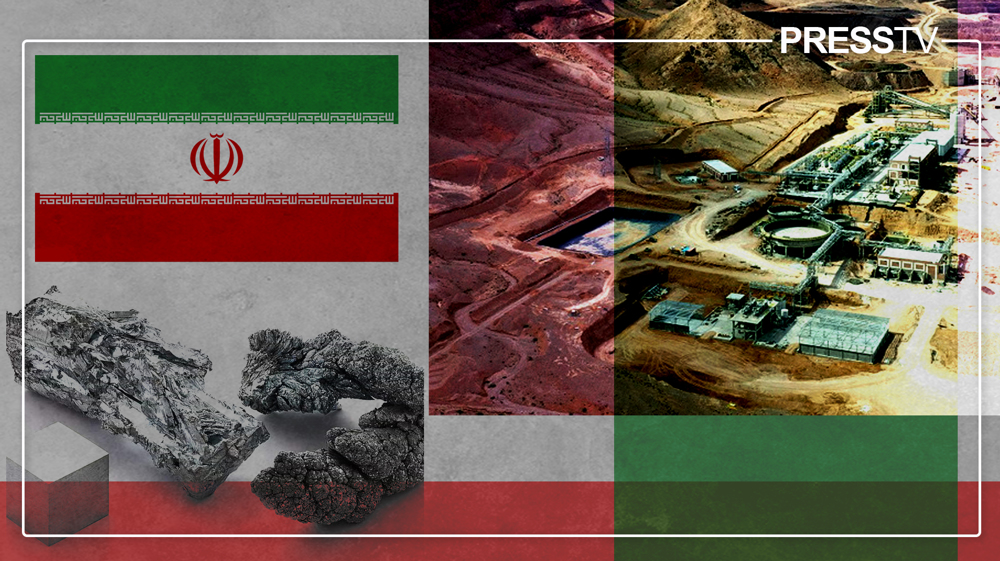The first day of Azar, falling on November 22, has been marked in Iran’s national calendar as Lead and Zinc Day, a reminder of how central this industry has become and how closely it is tied to the country’s economic ambitions.
Lead and zinc are counted among the world’s strategic metals. Zinc feeds construction, automobile production, new energy technologies and medical equipment. Lead remains indispensable for batteries, cables and electronic systems.
Iran’s lead and zinc industry has become one of the country’s most telling examples of how a resource business can create value when technology, geology and private investment line up.
Iran holds vast mineral wealth with proven reserves of roughly 29 billion tonnes and probable reserves nearly twice as large. More striking than the volume is the variety, where more than 64 mineral types give the country a diverse base that few competitors in the region can match.
Within that landscape, lead and zinc stand out. About 9–10% of the global identified reserves of these metals lie in Iran, putting the country just behind China, Kazakhstan and India in Asia’s league table of geological endowment.
The operational strength of the industry has been built over six decades. Mining of lead and zinc began in the 1960s, but the transformation happened as domestic specialists, working largely in the private sector, shifted the business model away from basic ore extraction.
Their aim has been to reduce reliance on raw mineral sales and build a value chain capable of capturing more income at home.
This shift did not happen overnight. In earlier years, producers struggled even to sell concentrate graded at 50% zinc.
The turnaround is visible today in both output scale and export performance. Iran is now the sixth-largest zinc producer and the fifth-largest lead producer in Asia.
More importantly for a foreign exchange-hungry economy, about 80% of the sector’s output is exported to 15 countries. The annual export potential is estimated at around $2 billion, a dramatic reversal from the years when unsold stockpiles were a major worry.
Only about one-fifth of production is consumed domestically, reflecting the sector’s role as a hard currency earner.
The Angouran mine and processing complex in Zanjan province illustrates how these gains have been achieved. As one of West Asia’s largest lead and zinc operations, it supplies roughly 30% of domestic feedstock.
A further 10% comes from other Iranian sources and the remainder is imported to ensure steady production.
The willingness to blend domestic and foreign inputs shows a commercial pragmatism that has helped sustain smelters and processing plants even when local ore grades fluctuate.
Technology has been another driver of performance. Not long ago, ore with 14–15% metal content would be dumped as waste. Now, refiners extract metal from material with less than 1% content.
This improvement in recovery rates marks a significant step in capital efficiency. It also shifts the economics of the sector. As more metal is recovered from the same volume of rock, producers can raise output without proportionally higher mining costs.
Such gains matter for a country that aims to turn mineral wealth into a reliable industrial base rather than a volatile commodity cycle.
The employment footprint is equally notable. About 15,000 people work directly in the lead and zinc industry. The indirect jobs, including transport, engineering, equipment supply and logistics, multiply the figure several times.
For regions around Zanjan and other mining hubs, this industry has become a stabilizing force, supplying predictable wages in places where job creation can be slow.
Downstream activity has deepened as well. Products such as zinc sulfate for agriculture and zinc oxide for pharmaceuticals are fully supplied by domestic producers.
These industries no longer rely on imported intermediates, even though the specialized nature of these compounds makes exporting them difficult.
Still, the existence of a complete domestic supply chain marks a technical leap for Iran, allowing local manufacturers to operate with cheaper inputs and steadier supply.
Environmental practices have also changed. Waste, once viewed as valueless residues containing nickel, cobalt and cadmium, is now processed to extract those metals.
The ability to turn industrial waste into saleable material both reduces disposal costs and supports the development of a greener industry.
For a sector often criticized globally for heavy environmental footprints, these recovery systems demonstrate how engineering solutions can shift the balance towards more sustainable operations.
The geological reality that lead and zinc are usually found together has reinforced integration. Roughly 70% of deposits contain both.
Most zinc mines are underground, accounting for about 80% of operations; 10% are open-pit, and the rest are a mix. This structure allows producers to plan long-term extraction while limiting land disturbance.
It also supports steady feedstock for processing plants, which rely on a predictable supply to maintain export commitments.
The global significance of these metals adds weight to Iran’s progress. Zinc is the fourth most-used metal in the world, essential for construction, automobiles, renewable energy components and medical instruments. Lead is the sixth most-used, central to batteries, cables and electronics.
These uses have deep historical roots. Zinc alloys date back seven millennia; lead has been used for more than 5,000 years, but their modern applications place them at the heart of industrial and green-technology supply chains.
Iran’s ability to serve these markets gives the country leverage in a sector where demand tends to track long-term economic growth rather than short-term cycles.
Decades of accumulated expertise, persistent private investment and a strong geological base have together repositioned Iran as a significant force in the regional and global lead and zinc market.
The industry’s capacity to turn former waste into profitable metals, reach near-complete domestic supply in several downstream products, sustain a large export surplus and operate to international quality standards has created a platform of industrial power that continues to expand.

